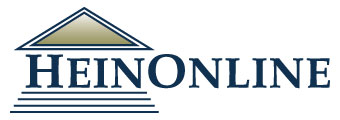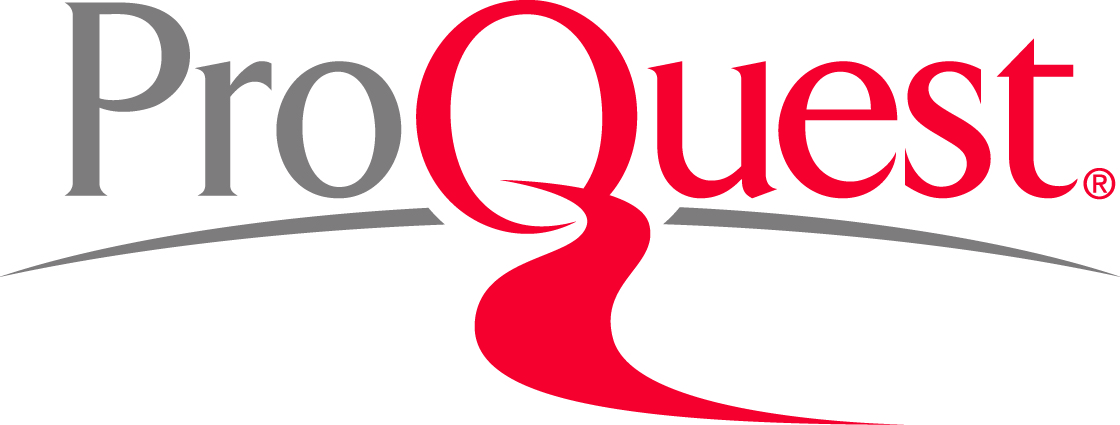The applicability of Parsons’ action system to the food system
Keywords:
Talcott Parsons, action system, food system, systems theory
Abstract
In this paper Talcott Parsons’ systems theory is applied to the food system. After the introduction of the basic categories of the food system, the main elements of Parsons’ theory are drawn up. Then, the detailed analysis takes place on three abstraction levels: within the general paradigm of human condition, the action system and the social system. During the analysis, two conclusions are formulated: one of them is in connection with the correction of abstraction levels concerning the food system, the other one creates the classes of the food system that can be corresponded to the four Parsonsian functions. In the end of the study, a final conclusion is formulated.
References
1. Benkő L, Kiss L & Papp L (eds.) (1967) A magyar nyelv történeti-etimológiai szótára, Vol. I, A-Gy, Akadémiai Kiadó, Budapest.
2. Ericksen P J (2007) Conceptualizing food systems for global environmental change research, Global Environmental Change 18(1), pp. 234–245.
3. Food and Agriculture Organisation (1996) Rome Declaration on World Food Security. World Food Summit, Plan of Action, 13 November 1996, http://www.fao.org/3/w3613e/w3613e00.htm [10.04.2021]
4. Holmwood J (2014) Founding Sociology? Talcott Parsons and the Idea of General Theory, Routledge, London - New York.
5. Ihrig K (1941) Agrárgazdaságtan, Gergely R. Könyvkereskedése, Budapest.
6. Ingram J (2011) A food systems approach to researching food security and its interactions with global environmental change, Food Security 3(4), pp. 417–431.
7. Kneen B (1989) From Land to Mouth: Understanding the Food System,
NC Press, Toronto.
8. LaBianca Ø S (1991) Food systems research: An overview and a case study from Madaba Plains, Jordan, Food and Foodways 4(3–4), pp. 221–235.
9. Lang T & Heasman M (2004) Food Wars – The Global Battle for Mouths, Minds and Markets, Earthscan, London.
10. Luhmann N (2002) Einführung in die Systemtheorie, Carl-Auer-Systeme Verlag, Heidelberg.
11. Luhmann N (2013) Introduction to Systems Theory, Polity Press, Cambridge.
12. Merriem-Webster (ed.) (2002) Webster’s Third New International Dictionary, Unabridged, Merriem-Webster, Springfield.
13. Morel J, Bauer E, Meleghy T, Niedenzu H-J, Preglau M & Staubmann H (eds.) (2000) Szociológiaelmélet, Osiris Kiadó, Budapest.
14. Némedi D (ed.) (1988) Talcott Parsons a társadalmi rendszerről (Válogatás), ELTE Szociológiai Intézet és Továbbképző Központ, Budapest.
15. Online Etymology Dictionary. n.d. „system (n)., 26 June 2020, https://www.etymonline.com/word/system [10.04.2021]
16. Parsons T (1937) The Structure of Social Action, McGraw-Hill Book Company, Inc., New York.
17. Parsons T (1978) Action Theory and the Human Condition, The Free Press –
A Division of Macmillan Publishing Co., Inc., New York.
18. Parsons T (1991) The Social System (With a New Preface by Bryan S. Turner), Routledge, London.
19. Pokol B (1987) A funkcionalista rendszerelmélet kibomlása. Talcott Parsons és Niklas Luhmann társadalomelméletének kategóriáiról, in: Csepeli Gy, Papp Zs, Pokol B (eds.) Modern polgári társadalomelméletek, Gondolat, Budapest, pp. 153–324.
20. Reiterer Z (2016) Topical legal questions of the food chain and its authority supervision, Journal of Agricultural and Environmental Law 11(20), pp. 114–130, doi: https://doi.org/10.21029/JAEL.2016.20.114.
21. Smith F (2009) Agriculture and the WTO. Towards a New Theory of International Agricultural Trade Regulation, Edward Elgar Publishing Limited, Cheltenham, UK – Northampton, MA, USA.
22. Sobal J, Kettel Khan L & Bisogni C (1998) A Conceptual Model of the Food and Nutrition System, Social Science & Medicine 47(1), pp. 853–863.
23. Szabó M (2015) Rendszeres jogelmélet, Bíbor Kiadó, Miskolc.
24. Szilágyi J E (2013) Vízjog, Miskolci Egyetem, Miskolc.
25. Szilágyi J E (2016) Current challenges concerning the law of water services in Hungary, Lex et Scientia 23(1), pp. 70–82.
26. Szilágyi J E (2018) Vízszemléletű kormányzás – vízpolitika – vízjog, Miskolci Egyetemi Kiadó, Miskolc.
27. Szilágyi J E (2019) Systematization and some current issues of water law and water regulation in the framework of the European Union, Journal of Agricultural and Environmental Law 14(26), pp. 255–298, doi: https://doi.org/10.21029/JAEL.2019.26.255.
28. Szilágyi J E (ed.) (2017) Agrárjog – A magyar agrár- és vidékfejlesztési jogi szabályozás lehetőségei a globalizálódó Európai Unióban, Miskolci Egyetemi Kiadó, Miskolc.
29. Szűcs P & Ilyés Cs (2019) Groundwater – an invisible natural resource, Journal of Agricultural and Environmental Law 14(26), pp. 299–324, doi: https://doi.org/10.21029/JAEL.2019.26.299.
30. Tansey G & Worsley T (1995) The Food System: A Guide, Earthscan, London.
31. van Berkum S, Dengerink J & Ruben R (2018) The food systems approach: sustainable solutions for a sufficient supply of healthy food, Wageningen, Wageningen University & Research.
32. von Bertalanffy L (1972) General System Theory: Foundations, Development, Applications, George Braziller, Inc., New York.
2. Ericksen P J (2007) Conceptualizing food systems for global environmental change research, Global Environmental Change 18(1), pp. 234–245.
3. Food and Agriculture Organisation (1996) Rome Declaration on World Food Security. World Food Summit, Plan of Action, 13 November 1996, http://www.fao.org/3/w3613e/w3613e00.htm [10.04.2021]
4. Holmwood J (2014) Founding Sociology? Talcott Parsons and the Idea of General Theory, Routledge, London - New York.
5. Ihrig K (1941) Agrárgazdaságtan, Gergely R. Könyvkereskedése, Budapest.
6. Ingram J (2011) A food systems approach to researching food security and its interactions with global environmental change, Food Security 3(4), pp. 417–431.
7. Kneen B (1989) From Land to Mouth: Understanding the Food System,
NC Press, Toronto.
8. LaBianca Ø S (1991) Food systems research: An overview and a case study from Madaba Plains, Jordan, Food and Foodways 4(3–4), pp. 221–235.
9. Lang T & Heasman M (2004) Food Wars – The Global Battle for Mouths, Minds and Markets, Earthscan, London.
10. Luhmann N (2002) Einführung in die Systemtheorie, Carl-Auer-Systeme Verlag, Heidelberg.
11. Luhmann N (2013) Introduction to Systems Theory, Polity Press, Cambridge.
12. Merriem-Webster (ed.) (2002) Webster’s Third New International Dictionary, Unabridged, Merriem-Webster, Springfield.
13. Morel J, Bauer E, Meleghy T, Niedenzu H-J, Preglau M & Staubmann H (eds.) (2000) Szociológiaelmélet, Osiris Kiadó, Budapest.
14. Némedi D (ed.) (1988) Talcott Parsons a társadalmi rendszerről (Válogatás), ELTE Szociológiai Intézet és Továbbképző Központ, Budapest.
15. Online Etymology Dictionary. n.d. „system (n)., 26 June 2020, https://www.etymonline.com/word/system [10.04.2021]
16. Parsons T (1937) The Structure of Social Action, McGraw-Hill Book Company, Inc., New York.
17. Parsons T (1978) Action Theory and the Human Condition, The Free Press –
A Division of Macmillan Publishing Co., Inc., New York.
18. Parsons T (1991) The Social System (With a New Preface by Bryan S. Turner), Routledge, London.
19. Pokol B (1987) A funkcionalista rendszerelmélet kibomlása. Talcott Parsons és Niklas Luhmann társadalomelméletének kategóriáiról, in: Csepeli Gy, Papp Zs, Pokol B (eds.) Modern polgári társadalomelméletek, Gondolat, Budapest, pp. 153–324.
20. Reiterer Z (2016) Topical legal questions of the food chain and its authority supervision, Journal of Agricultural and Environmental Law 11(20), pp. 114–130, doi: https://doi.org/10.21029/JAEL.2016.20.114.
21. Smith F (2009) Agriculture and the WTO. Towards a New Theory of International Agricultural Trade Regulation, Edward Elgar Publishing Limited, Cheltenham, UK – Northampton, MA, USA.
22. Sobal J, Kettel Khan L & Bisogni C (1998) A Conceptual Model of the Food and Nutrition System, Social Science & Medicine 47(1), pp. 853–863.
23. Szabó M (2015) Rendszeres jogelmélet, Bíbor Kiadó, Miskolc.
24. Szilágyi J E (2013) Vízjog, Miskolci Egyetem, Miskolc.
25. Szilágyi J E (2016) Current challenges concerning the law of water services in Hungary, Lex et Scientia 23(1), pp. 70–82.
26. Szilágyi J E (2018) Vízszemléletű kormányzás – vízpolitika – vízjog, Miskolci Egyetemi Kiadó, Miskolc.
27. Szilágyi J E (2019) Systematization and some current issues of water law and water regulation in the framework of the European Union, Journal of Agricultural and Environmental Law 14(26), pp. 255–298, doi: https://doi.org/10.21029/JAEL.2019.26.255.
28. Szilágyi J E (ed.) (2017) Agrárjog – A magyar agrár- és vidékfejlesztési jogi szabályozás lehetőségei a globalizálódó Európai Unióban, Miskolci Egyetemi Kiadó, Miskolc.
29. Szűcs P & Ilyés Cs (2019) Groundwater – an invisible natural resource, Journal of Agricultural and Environmental Law 14(26), pp. 299–324, doi: https://doi.org/10.21029/JAEL.2019.26.299.
30. Tansey G & Worsley T (1995) The Food System: A Guide, Earthscan, London.
31. van Berkum S, Dengerink J & Ruben R (2018) The food systems approach: sustainable solutions for a sufficient supply of healthy food, Wageningen, Wageningen University & Research.
32. von Bertalanffy L (1972) General System Theory: Foundations, Development, Applications, George Braziller, Inc., New York.












